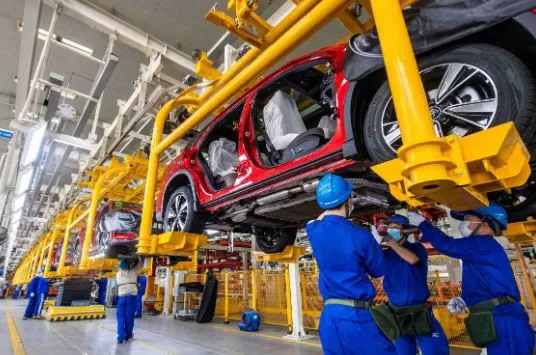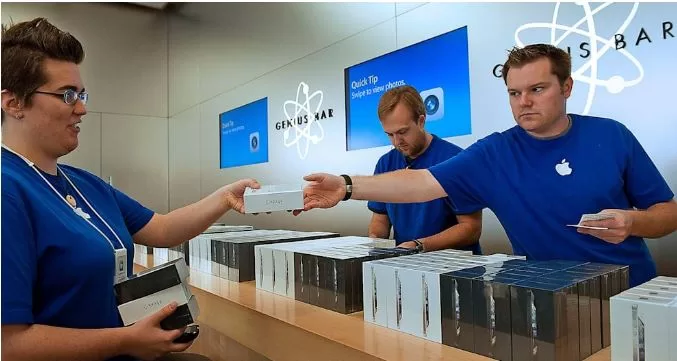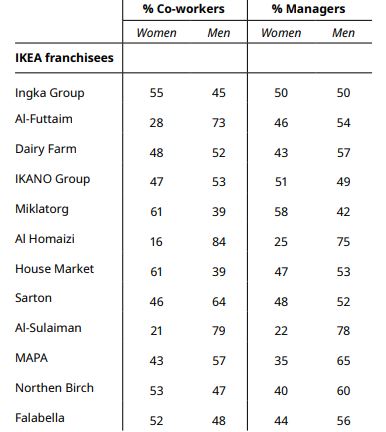Culture

BYD organizational culture integrates the following three key elements: 1. Meritocracy. BYD promotes a culture of meritocracy, where performance and results are rewarded. BYD’s culture strongly emphasizes performance and achieving concrete results. Promotions, bonuses, and other rewards are heavily tied to individual contributions and exceeding targets. Such an approach incentivizes employees to constantly strive for excellence, pushing themselves and the company forward. 2. Cost-cutting. Reducing expenses whenever possible is a crucial element of EV maker’s organizational culture, woven into its fabric and contributing significantly to its success. BYD famously controls almost every aspect of its production, from battery cells to vehicle assembly. This reduces reliance on external suppliers and cuts down on costs significantly. For instance, they manufacture their own semiconductors, a major expense for EV production. The company encourages a culture of resourcefulness and frugality among its employees. They’re empowered to find creative solutions to save costs, from reusing materials to optimizing energy consumption. For example, employees developed a system to recycle scrap metal from the production process, saving millions of dollars annually. 3. Value-driven culture. The EV giant promotes the values of excellence, pragmatism, passion and innovation. These values go beyond mere slogans and posters, influencing every aspect of the company’s operations and employee behaviour. BYD empowers employees at all levels to take ownership and make decisions aligned with the core values. A strong community spirit is present at the company fostering a sense of belonging and collaboration, where employees feel valued and invested in the company’s success. BYD Company Limited Report contains the above analysis of BYD organizational culture. The report illustrates the application of the major analytical strategic frameworks in business studies such as SWOT, PESTEL, Porter’s Five Forces, Value Chain analysis, Ansoff Matrix and McKinsey 7S Model on BYD. Moreover, the report contains analyses of BYD leadership, organizational structure and business strategy. The report also…

Marriott organizational culture integrates the following five key elements: 1. People-first approach. Putting people first is Marriott’s top priority. The company believes that by taking care of its employees, they will in turn take care of customers. This commitment is evident in Marriott’s many employee-focused programs and initiatives, such as its tuition reimbursement program, its employee assistance program, and its diversity and inclusion initiatives. 2. Pursuing excellence. Pursing excellence is another core value that is integrated within Marriott organizational culture. The company sets high standards for its employees and encourages them to continuously strive to improve. This commitment to excellence is reflected in hotel chains many awards and accolades. These include recognition as one of Fortune’s 100 Best Companies to Work For and one of Ethisphere’s World’s Most Ethical Companies. 3. Acting with integrity. The largest hotel chain in the world expects its employees to be honest, ethical, and fair in all their dealings. This commitment to integrity is reflected in Marriott’s code of conduct and its many policies and procedures designed to promote ethical behaviour. 4. Serving the world. Marriott International declares its commitment to making a positive difference in the world. The company supports a variety of charitable organizations and encourages its employees to volunteer in their communities. Marriott also has a number of sustainability initiatives in place, such as its commitment to reducing its environmental impact and its investment in renewable energy. 5. Embracing change. The company understands that change is essential in the hospitality industry, which is constantly evolving. Marriott is committed to staying ahead of the curve and adapting to the changing needs of its customers. This commitment is evident in the company’s willingness to invest in new technologies and its focus on innovation. Marriott International Inc. Report contains the above analysis of Marriott organizational…

Netflix organizational culture integrates the following five key elements: 1. Encouraging decision-making by employees. The entertainment services provider encourages employees at all levels to take initiative and resolve issues on their own with minimum input from their superiors. Decision making at the on-demand media provider is made by individuals, referred to informed captains, rather than by teams or committees. Informed captains are experts in their area who listen to the viewpoints of other people and then make decisions on their own. Thanks to this principle Netflix doesn’t have to wait for consensus or vote by the committee and this is huge advantage taking into account highly dynamic nature of the external environment. 2. Sharing information openly, broadly and deliberately. Netflix has taken a radical approach towards information sharing. The largest streaming service in the world maintains online memos in narrative form for members of board of directors that not only include links to supporting analysis but also allow open access to all data and information on the company’s internal shared systems. This is unprecedented for a global corporation. Unlike, some other tech companies such as Apple, employees at all levels of the streaming service have access to all internal information. Access to data helps Netflix employees to make more informed decision making. Moreover, thanks to the access to information employees feel trusted and become more responsible at their job. 3. Communicating candidly and directly. Openness in communication is one of the pillars of Netflix organizational culture. Candid and direct communication also relates employee performance feedback. Openness has been ingrained into the culture of Netflix to such a degree that not speaking up one’s mind can be easily perceived as an act of disloyalty. 4. Keeping only our highly effective people. The streaming service models itself on being a…

Corporate culture of Apple plays an important role in efficiently maintaining its operations in the global scale with 164,000 full-time equivalent employees.[1] Apple organizational culture used to have a reputation of being harsh, demanding and intimidating under the leadership of founder and late CEO Steve Jobs. However, it can be argued that since assuming the top leadership in 2011, Tim Cook has invested considerable efforts towards ‘humanising’ the brand. Specifically, unlike his predecessor, Tim Cook has spoken out about human rights, privacy, immigration reform and environmental issues.[2] Apple corporate culture integrates the following important features: 1. Creativity and innovativeness. Apple pursues the business strategy of product differentiation with the focus on the design and functionality of products and services. An effective implementation of this strategy in practice requires a high level of creativity and innovativeness from employees at all levels. Accordingly, in order to encourage their employees to be more creative and innovative, the company attempts to develop relevant working environment. Creative design of Apple Campus, informal dress codes and creatively designed working space can be mentioned to illustrate this point. 2. Working under pressure. Ability to work under pressure is a must-have skill for Apple employees at all levels. In fact, it is challenging to work for the first company ever to be valued at $3 trillion. Most projects have strict and short deadlines and working long hours is a norm in the company. CEO Tim Cook sets example in terms of his loyalty to the company and working long hours. He is known for sending emails to employees at 4:30 am. Moreover, Sunday is a work night for many managers at Apple because of the executive meeting the next day. Not everyone can sustain to work at such an intense rate. But employees who survive within the first…

Nvidia organizational culture integrates the following key elements. 1. Innovation. Nvidia is one of the most innovative companies in the world and its organizational culture promotes the spirit of creativity for innovation among employees at all levels. The company encourages employees to think outside the box and come up with new and creative solutions to problems. Consistently producing innovative products and services is a business strategy for NVIDIA and therefore, the company systematically attempts to integrate innovation into the DNA of its organizational culture. 2. Intellectual honesty. The co-founder and long-term CEO Jensen Huang has served as a role model in integrating intellectual honesty within Nvidia organizational culture. For Huang intellectual honesty is critically important to admit mistakes and failures and tolerating them to foster creativity and innovation. Jensen Huang came to appreciate the value of intellectual honesty early on in his career as a head of Nvidia. The first ever product produced by Nvidia simply did not work costing huge amount of investments. It was at that time Huang acknowledged the failure and started everything from the beginning. 3. High-performance. Organizational culture of Nvidia promotes high performance among employees through creating relaxed environment for employees to work. The absence of office politics and hierarchy motivates employees to perform at their best. 4. Inclusion and diversity. CEO Jensen Huang has placed inclusion and diversity at the core of Nvidia organizational culture. Diverse employees at NVIDIA score the company 78/100 across various culture categories, placing NVIDIA in the top 10% of companies on Comparably with 10,000+ Employees for Comparably’s diversity score[1]. Nvidia Corporation Report contains the above analysis of Nvidia organizational culture. The report illustrates the application of the major analytical strategic frameworks in business studies such as SWOT, PESTEL, Porter’s Five Forces, Value Chain analysis, Ansoff Matrix and…

A documentary released by Hulu on April 1st 2021 provides an insight on WeWork organizational culture and its serious shortcomings under the leadership of co-founder and former CEO Adam Neumann. At that time corporate culture at WeWork was notorious for ‘frat-boy’ culture, sexual abuse, motivational mantras and free beer. The co-working giant organized annual employee retreat on a remote island. The company engaged in tracking employees at mandatory, alcohol-fuelled company events and an onboarding process that made all new employees shout WeWork until red in the face. New CEO, real estate veteran Sandeep Mathrani who took helm in February 2020 brought maturity and discipline into the company with direct implications on organizational culture of WeWork. Dubbed as ‘anti-Adam Neumann’ the new CEO was quick to put a stop at extravagant company events and cut costs in many other ways. Under the new leadership the global flexible workspace provider has committed to zero tolerance to discrimination and abuse at workplace in any form and these changes are more than welcomed by stakeholders. Mr. Mathrani is committed to change the important components of WeWork organizational culture in the following ways: Values. Mathrani specified the following values to be central for the co-working and office space operator: Do the right thing Strive to be better, together Be entrepreneurial Give gratitude Be human, be kind Attitudes. New CEO expects mature and more responsible attitude towards the work from employees at all levels. Norms and expectations. Employees are expected to work hard, deliver results and be considerate towards their co-workers. Discrimination and abuse is no longer tolerated at the co-working giant. Rituals, symbols and routines. Extravagant rituals such as shouting WeWork at company gatherings, ordering coffee from WeWork’s in-house barista and many others popular under Adam Neumann were put to stop permanently. WeWork…

Organizational culture is a popular and a very complex concept, and has been identified as an influential factor affecting the success and failures of organizational change efforts. Components of organizational culture An organizational culture may include the following[1] (Hofstede 1997): Values. Values are beliefs. They are things that are most important. For example, for schoolteacher educating pupil is most important thing, no matter how he/she does it. Attitudes. It is the way the company thinks. It could also include collective behaviour such as business formalities or ceremonies. Norms and Expectations. That is things that expected from members of company. As a example, police officer on duty expected to wear his/her uniform. Rituals, symbols and routines. Business logos can be example of symbols, though they are directed outwards. Most successful organizations tend to have stronger cultures that is widely shared among its employees and reflected in their everyday actions. Different countries have different ways of doing business, different culture, different values and assumptions which influence the organization style. Therefore, Hofstede (1997) believes that national culture needs to be considered as one of the major factors which influence organization culture in various ways. Types of Organizational Culture Organization culture can be classified into four types (Harrison, 1972): Power culture. This is the type of organization controlled by a key central figure, owner or founder. Power culture suits small organizations where the leader has direct communication with employees. Role Culture. This is the organization where authority based up on function and position. These organizations have formal structure and operate by well established rules. Though this is bureaucratic style, it can be very efficient when the organization is large and work is predictable. Task Culture. The main concern in task culture is to get the job done. In these type of organizations there…

Starbucks organizational culture is based on values and principles of its former long-term CEO Howard Schultz. It has been noted that “Starbucks’ culture is powerful because it is tightly linked to the company’s distinctive capabilities[1].” Starbucks organizational culture integrates the following four key elements: 1. Valuing employees and their contribution. At Starbucks employees are referred to as partners and they are taken care of by the company via competitive compensation packages. For example, the coffee chain offers stock options and health insurance even to part-time employees in the US. Moreover, “at the height of the global financial crisis, when other companies were cutting HR costs wherever they could, Starbucks invested in staff training, including coffee tastings and courses that ultimately qualified for credit at higher education institutions”[2] 2. Presence of close bonds among employees. The company firmly believes in relationship-driven approach to the business and encourages the formation of close bonds between employees in its stores. One can easily witness the presence of close bonds among employees by simply observing their interaction in any store belonging to the Seattle-based international coffee chain. This contributes to the formation of relaxing and comfortable environment in Starbucks store, effectively strengthening its role as ‘third place’ away from work and home, where customers can spend good time alone or with their friends. 3. Culture of inclusion and diversity. Embracing inclusion and diversity is placed at the core of Starbucks corporate culture. The world’s largest coffee retailer runs 12 diverse Partner Networks, representing the broad spectrum of employee backgrounds. These include Armed Forces Network, Black Partner Network, Disability Advocacy Network and others. The multinational chain of coffeehouses received 100% score on the Disability Equality Index. The principles of inclusion and diversity prevail not only among the workforce, but also have reflections on customer…

IKEA organizational culture plays an important role in maintaining cost-effective business operations to sustain cost leadership business strategy for the furniture giant. In other words, due to its cost leadership business strategy, IKEA does not offer the most competitive financial compensation to its workforce. Instead, the home improvement and furnishing chain attracts employees with intangible benefits that are deeply integrated within IKEA corporate culture. IKEA organizational culture is based on the following principles: 1. Simplicity and high level of informality. It has been noted that “humbleness in approaching tasks and simplicity in the way of doing things are cornerstones of the IKEA culture”.[1] For example, in IKEA US only a few executives have business cards and “everyone is on a first-name basis and sits side by side at IKEA desks and if you have an ego that needs stroking, IKEA is not the workplace for you.”[2] 2. The value for teamwork. Executives who prefer to manage as one-man show do not fit into IKEA organizational culture. The Swedish furniture chain wants to ensure that it employs only individuals who share its values and appreciate its culture. For this reason, individuals wishing to join IKEA are offered to take an online test which poses a series of 10 work-based scenarios with a choice of actions. The outcome of the test advises applicants if they are likely to ‘fit’ into IKEA organizational culture. 3. Embracing diversity among employees and different ways of doing things. Diversity among the workforce in terms of gender, race, age, ethnicity and sexual orientation is an important element of IKEA corporate culture. As illustrated in table below, there is an adequate level of women representation among across franchisees in floor level workers, as well as, management. IKEA employee gender diversity in FY21[3] Furthermore, the furniture retailer supports…

McDonald’s organizational culture is somewhat controversial. On one hand, the fast food giant associates its corporate culture with the principles of inclusion, integrity and family values. Moreover, McDonald’s prides its organizational culture with encouraging learning for employees at all levels. On the other hand, the company has faced myriad lawsuits and claims in recent years, some involving allegations of sexual harassment and others around racial discrimination. Even the CEO Steve Easterbrook was fired in 2019 for having consensual relationship with his subordinate employee. Later it was revealed that Mr. Easterbrook awarded generous stock options to one of the female employees he had sexual relationship with. Furthermore, it was reported that the former CEO “in addition to lying about his own misconduct, allegedly tried to cover up the inappropriate behaviour of other McDonald’s executives.”[1] The following two factors have negative effects on McDonald’s organizational culture: 1. Highly hectic work environment. High speed of service is one of the core competitive advantages for McDonald’s. The cashiers are expected to greet customers, take orders, collect payments, recommend products, promote special deals and arrange food items on trays in a couple of minutes. Such a pace to be sustained during long shifts creates tremendous stress for thousands of customer-facing employees worldwide. 2. Low wages. The fast food chain pursues cost leadership business strategy operating with a thin profit margin per item, but selling at large volumes. Operations with low profit margin reflect on floor-level employee wages as well. Specifically, McDonald’s is notorious for paying low wages and exploiting human resources. The current President and CEO Chris Kempczinski attempts to improve McDonald’s organizational culture addressing the negative impact of factors described above. However, Mr. Kempczinski himself courted controversy when he sent a text to Chicago Mayor Lori Lightfoot blaming the kid’s parents for the shooting at McDonald’s location.[2] McDonald’s Corporation Report…
